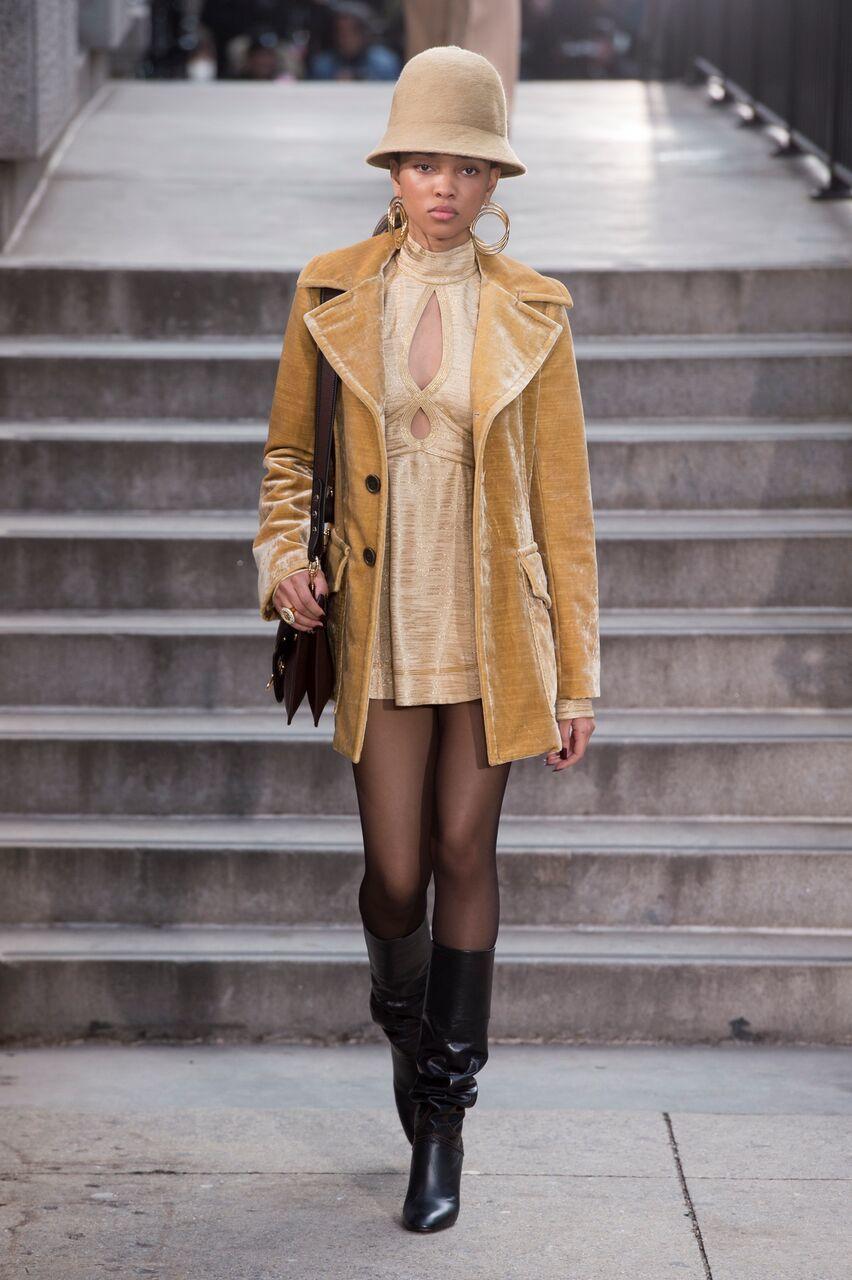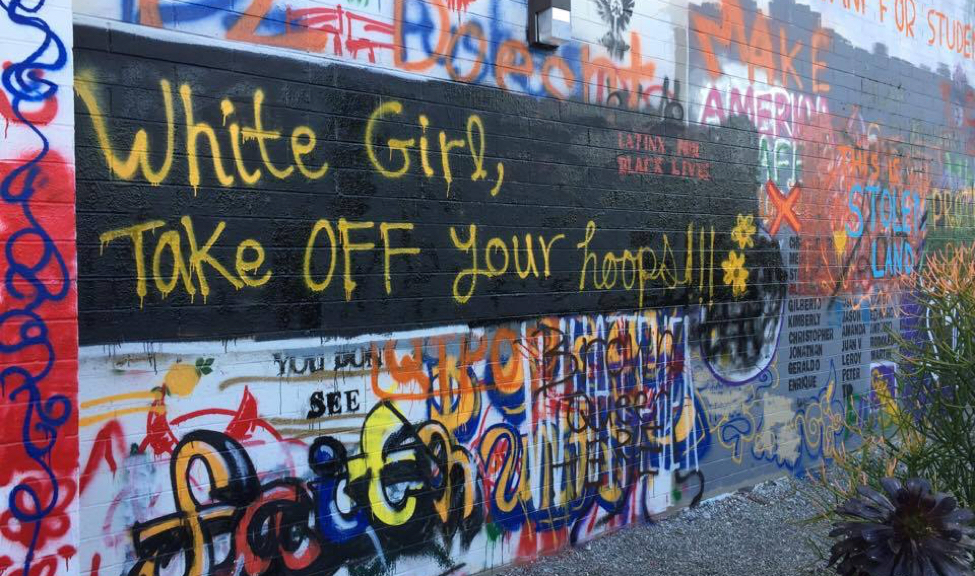As models stomped down the runway at Marc Jacobs’s fall/winter 2017 show last month, shiny gold hoop earrings swung from their ears. The jewelry ranged from giant three-tiered hoops to a single thin hoop with a diamond encrusted key dangling from it. The collection, which was also full of oversized fur collared jackets and monochromatic tracksuits, was inspired by the early days of hip-hop.
“It is an acknowledgement and gesture of my respect for the polish and consideration applied to fashion from a generation that will forever be the foundation of youth culture street style,” Jacobs explained in the show notes.

Unfortunately, not everyone who borrows from street culture is as eager to acknowledge the contributions of people who created it, from cornrows to baby hairs to the hoop earring. The round jewelry has been a favorite accessory for decades from Cher in the 1960s to Madonna in the 1980s, but hoop earrings have a deep-rooted history in communities of color.
This cultural significance of the hoop earring was brought to light last week when three Latina students painted a message to their fellow classmates at Pitzer College in California about their earrings. They scribbled “White girls, take off your hoops” in bright yellow spray paint on a wall outside of a dormitory, after they noticed an influx of their peers wearing oversized hoop earrings.
Alegria Martinez, one of the students responsible for the graffiti, wrote an email to the student body that stated that they were sick of white women appropriating styles that “belonged to black and brown folks who created the culture.” The controversy came shortly after Elle dubbed the hoop earring a must-have accessory for fall, thanks not only to Marc Jacobs, but others like Fendi and Michael Kors.

Designers, celebrities, and even retailers have been long accused of taking styles from marginalized groups they think are “cool” without any consideration for the context. Last November, people took to social media to call out Urban Outfitters when it attempted to re-brand oversized gold doorknocker earrings. “The same earrings that people find ratchet or ghetto on black women are now $16.00 and sold at hipsters R us. These are literally a dollar at the nearest black hair store. My culture says you’re welcome,” one woman wrote in a Facebook post that has now been shared over 21,000 times.
“This is about how women of color can’t wear their own style and culture because they are looked down upon when they do so,” Martinez explained to me over the phone. “But on the other hand, white females are allowed to appropriate the fashion when it is beneficial to them or makes them look edgy.”
Hoop earrings have a very long history dating all the way back to the ancient Sumerians from modern-day Iraq in 2600 B.C. Different variations of the hoop have been adopted by a range of cultures around the world, from the Hmong women of Vietnam to the Gadaba tribe of India, as Vogue points out. But, in America, the style has often been adopted by women of color in an effort to reclaim their culture and celebrate their history.
Hoop earrings became especially popular among African American women during the Black Power movement in the 1960s when many were embracing Afrocentric dress. From activists like Angela Davis to artists like Tina Turner, more women were adopting an African-inspired look that embraced natural hairstyles and hoop earrings.
As Tanisha C. Ford writes in her book, Liberated Threads: Black Women, Style, and the Global Politics of Soul, “In African-inspired clothing and large hoop earrings and sporting Afros and cornrow braids, Americans and Britons of African descent envisioned soul style as a symbolic baptism in freedom’s waters through which they could be reborn, liberated from cultural and social bondage of their slave and colonial past.”
The statement jewelry carried on into the 70s when it was embraced by disco divas like Diana Ross and Donna Summer. When the 80s rolled around, their thin gold hoops were traded for thick gold “door knocker” and bamboo hoop earrings by hip-hop artists like Salt N Pepa and MC Lyte.
By the 1990s, oversized hoop earrings were a fixture of Chola style, which was embraced by working-class Mexican American women in Southern California. The radical look was defined by slicked-down baby hairs, dark lip-liner, and door-knocker hoop earrings.
But, it was about more than just fashion. As Barbara Calderón-Douglass writes in her piece “The Folk Feminist Struggle Behind the Chola Fashion Trend,” “The chola aesthetic is the result of impoverished women making a lot out of the little things their families could afford.”
Martinez, who grew up in Southern California, says she sees the style as a form of resistance. “We are women of color from Los Angeles, Long Beach, and San Bernadino and that is where this cultural style comes from,” explained Martinez. “Whenever we wear our hoops, or when I wear bold eyeliner and red lipstick, I feel really proud to be from that background.”
Fashion has always taken influences from different cultures. The problem with appropriating styles like hoop earrings is that many women of color still can’t wear these “trends” without facing discrimination for looking too “ghetto.” Not to mention, many of those who are eager to slip on a pair of hoop earrings fail to use their platform for any meaningful discussion about race.
As actress Amandla Stenberg wrote in response to Kylie Jenner wearing cornrows in 2015, “When u appropriate black features and culture but fail to use ur position of power to help black Americans by directing attention towards ur wigs instead of police brutality or racism #whitegirlsdoitbetter.”
Just last season Marc Jacobs faced a fury of appropriation accusations when he sent a predominantly white cast of models down the runway wearing colorful pastel dreadlocks. The designer had attributed the collection to the style of club kids, but failed to mention that the hairstyle has history in African culture. So, when the designer made a point to attribute his fall 2017 aesthetic to the early days of hip-hop and the people of color who created it, many were eager to praise him for finally appreciating the culture rather than merely appropriating it. Hopefully, more in the industry will take note.
Credits
Lead photography Flickr Creative Commons, artist Helena Metaferia
Runway photography Mitchell Sams
Graffiti photography Elliot Dordick of The Claremont Independent
